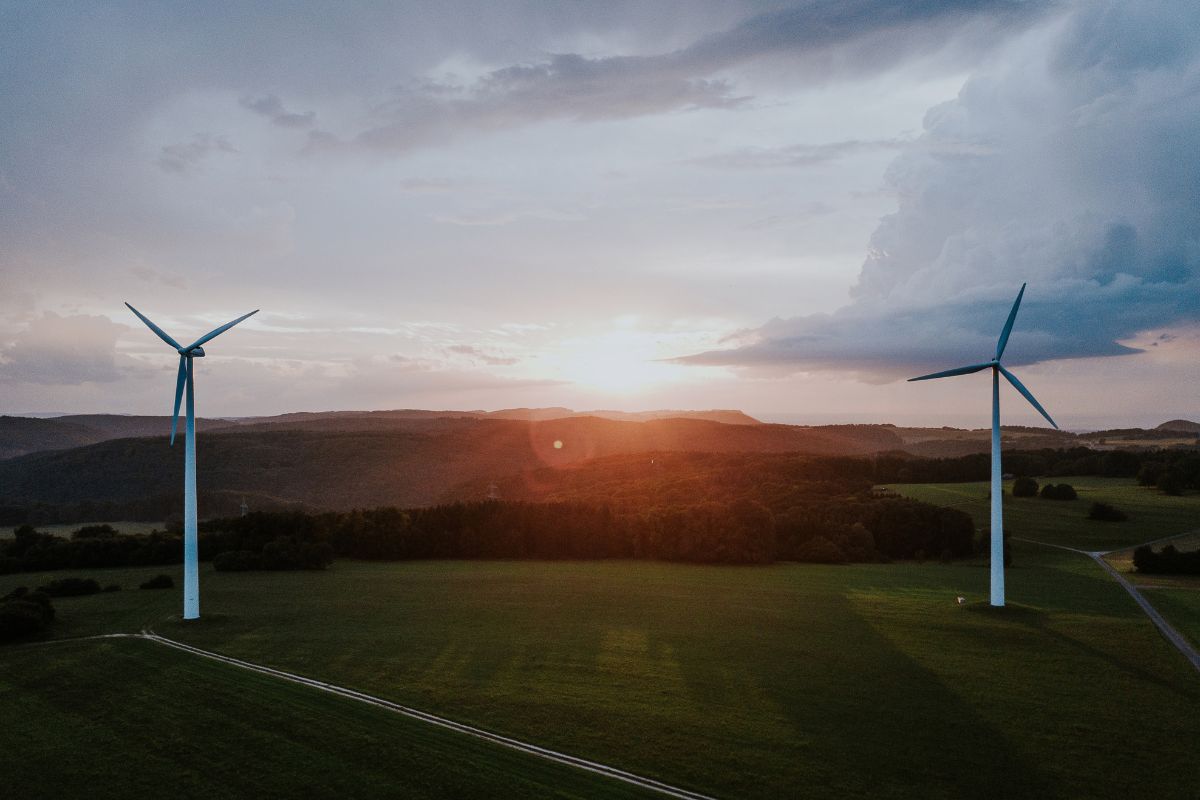When it comes to converting breezes to megawatts (MWs), there’s one energy source that stands tall. Wind farms generate energy to power homes and businesses using the power of the wind to spin turbines connected to generators. But before we can harness renewable energy from wind, resource planning teams must select the wind farm’s location.
This process can take up to five years due to the many steps required to find the right place. Planning teams start with maps to spot areas a wind farm might fit, preferably on flat land or land with gentle hills.
Although each wind turbine takes up only a small area on the ground, they must be properly spaced. The ideal size of the farm depends on the utility’s energy need and the capacity of each turbine. For example, if a utility requires 100 MWs of energy and a turbine’s capacity is 5 MWs, the wind farm will need enough area for 20 turbines.
Planning teams also consider how centrally located a site is within a community. The goal is to minimize disruption to community members. At the same time, we need to make sure the farm is close to resources needed during construction and for maintenance once the wind farm is fully operational.
After the site is selected, we create outreach communication plans for working directly with landowners and community members. These often include phone calls, knocking on doors, informational letters and town hall meetings to collaborate with communities on the transition to clean energy. Alliant Energy relies on the support of the communities we serve to fulfill our promise to create a reliable, diverse energy mix.
We also conduct land surveys and studies to help identify any potential environmental concerns including species migratory routes, threatened species in the area, the impact on local wildlife, historical use of the land, the presence of wetlands or other protected environments and more. Noise and shadow flicker studies are also completed to ensure minimal impact on nearby homeowners and surrounding communities.
Once all these steps are complete, they are compiled into an application that is submitted to the state’s regulatory agency. Upon approval, we prepare for construction.
The winds of change have been blowing toward clean energy for a while at Alliant Energy. Our wind farms have been operating since 2009 and continue to be an important energy source in our diverse mix. Planning for these sites is just a piece of the wind energy puzzle. Learn more about other pieces and benefits of wind energy here.

How to plan a wind farm

Grant Barton
Communications Partner
Published on August 15, 2023
Grant Barton is a Communications Partner with a passion for sustainability and eco-friendly city planning. He has a diverse background in engineering, politics and international communications and hopes to apply this experience when writing and breaking down complex topics related to Alliant Energy's Clean Energy Future plans.
Recent Stories
Alliant Energy VIP Dawn Dray shines a light on mental health
Dawn Dray's dedication to helping others extends far beyond her job.
Read More
Mentorship program helps prepare the next generation of dairy farmers
PDP makes advancements in the dairy farming field and supports its members through professional development, stakeholder engagement and a unified presentation of the industry to the public.
Read More
Changing seasons: Tune your building for Spring
To optimize savings and comfort, you must regularly recalibrate sensors and controls to match changing weather and operating conditions.
Read More
